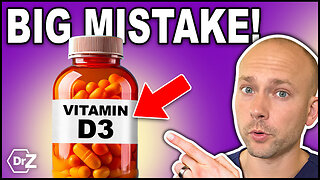Premium Only Content

Teaching Computers to Speak Human: Demystifying Word2Vec
Learn the basics of Word2Vec with this informative video on natural language processing. Understand tokenization and how AI is changing the game!
Welcome to this video from VLab Solutions, where we'll dive into the fascinating world of word embeddings using Word2Vec. Whether you're an aspiring data scientist, a natural language processing enthusiast, or just curious about how words can be transformed into numerical vectors, this guide is for you! 🌟
What Are Word Embeddings?
Word embeddings are numerical representations of words that capture their contextual meaning. Instead of treating words as discrete symbols, we map them to continuous vectors in a high-dimensional space. Word2Vec, in particular, learns these embeddings by predicting the surrounding words of a target word within a given context.
How Does Word2Vec Work?
Word2Vec offers two main architectures:
Continuous Bag-of-Words (CBOW):
Predicts the middle word based on the surrounding context words.
Context consists of a few words before and after the current (middle) word.
Order of words in the context is not important.
Continuous Skip-Gram:
Predicts words within a certain range before and after the current word in the same sentence.
Allows tokens to be skipped (see diagram below).
We'll focus on the skip-gram approach in this tutorial.
Steps to Implement Word2Vec with Skip-Gram:
Vectorize an Example Sentence:
Convert words to numerical vectors using an embedding layer.
Average out the word embeddings.
Generate Skip-Grams from One Sentence:
Define context pairs (target word, context word) based on window size.
Negative Sampling for One Skip-Gram:
Train the model on skip-grams.
Use negative sampling to improve efficiency.
Construct One Training Example:
Create input and output pairs for training.
Compile All Steps into One Function:
Combine the above steps into a cohesive function.
Prepare Training Data for Word2Vec:
Download a text corpus (e.g., Wikipedia articles).
Train the Word2Vec Model:
Define a subclassed Word2Vec model.
Specify loss function and compile the model.
Embedding Lookup and Analysis:
Explore the trained embeddings.
Visualize them using tools like the TensorFlow Embedding Projector.
Conclusion
Word2Vec provides a powerful way to learn word embeddings from large datasets. By capturing semantic relationships, these embeddings enhance various NLP tasks. Whether you're building chatbots, recommendation systems, or sentiment analysis models, understanding Word2Vec is essential.
Remember, word embeddings transform language into a mathematical space where words with similar meanings are close to each other. Dive into the world of Word2Vec, and let your models speak the language of vectors!
-
 9:04
9:04
Tundra Tactical
12 hours ago $21.46 earnedTrump's AG Pick Pam Bondi is TROUBLE!
78K34 -
 1:02:02
1:02:02
PMG
17 hours ago $11.14 earned"Man Films FBI Coming to His Home Over Alleged Social Media Posts - Jeremy Kauffman"
55.1K12 -
 23:21
23:21
Stephen Gardner
1 day ago🔥Trump DISCOVERS exactly who BETRAYED Him!!
163K577 -
 11:04
11:04
Silver Dragons
16 hours agoCoin Dealer Exposes the "German Silver" Scam & MORE
86.8K19 -
 39:56
39:56
TampaAerialMedia
18 hours ago $17.50 earnedBeautiful VERMONT - 15 Towns & 7 Scenic Highways - Burlington, Woodstock, Brattleboro, & More
95.7K26 -
 1:04:24
1:04:24
Tactical Advisor
20 hours agoBattlehawk Build Of The Month /Giveaway Winner | Vault Room LIVE Stream 009
164K41 -
 2:51:26
2:51:26
I_Came_With_Fire_Podcast
1 day ago"Houska Castle: Gateway to Hell, Nazi Occultism, & Ancient Legends"
125K41 -
 26:20
26:20
Degenerate Jay
1 day ago $11.15 earnedThe Best Transformers Movie? - Bumblebee Movie Review
91.7K12 -
 10:12
10:12
This Bahamian Gyal
1 day agoInfluencer hired HITMEN to OFF social media rival
75.7K22 -
 7:05
7:05
Dr. Nick Zyrowski
1 day agoVitamin D Mistakes Most People Make - Never Do This!
63.4K7